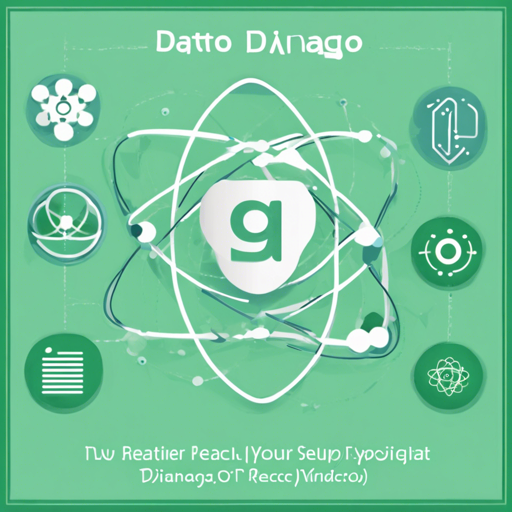Integrating Django with React can seem like a daunting task, but with the Django React Boilerplate, this process becomes much simpler and efficient. This boilerplate gives you a robust framework to build your applications with the latest libraries and tools. In this guide, we’ll walk through the setup and features of this boilerplate, ensuring you can get started without a hitch!
Overview of Django React Boilerplate
The Django React Boilerplate serves as a foundation for your projects by incorporating various modern tools including:
- React for building interactive user interfaces.
- TypeScript for robust type checking.
- Poetry for efficient dependency management.
- django-js-reverse for seamless URL generation in JavaScript.
- React Bootstrap for responsive design.
- Webpack for asset management.
- Celery for handling background tasks.
- WhiteNoise for efficient serving of static files.
- Ruff and ESLint for maintaining code quality.
Setting Up Your Project
Follow these steps to kickstart your project:
- Ensure Python 3.12 is installed.
- Install Django by running:
pip install django. - Open your terminal and navigate to your desired project directory.
- Run the following command to create your Django project (replace
project_namewith your chosen name): - If needed, create your project in the current directory using:
django-admin startproject project_name --extension py,json,yml,yaml,toml --name Dockerfile,README.md,.env.example,.gitignore,Makefile --template=https://github.com/vintasoftware/django-react-boilerplate/archive/refs/heads/main.zipdjango-admin startproject project_name . --extension py,json,yml,yaml,toml --name Dockerfile,README.md,.env.example,.gitignore,Makefile --template=https://github.com/vintasoftware/django-react-boilerplate/archive/refs/heads/main.zipUnderstanding the Code Structure
Think of the boilerplate code as a well-organized library. Each book represents a tool or library that contributes to the overall ecosystem of your application. In this library:
- Django is like the librarian, overseeing the organization and management of resources (data).
- React is akin to interactive displays, engaging users and bringing the information to life.
- TypeScript adds a layer of well-organized shelving, preventing misplaced books (errors) by enforcing strict organization (types).
- Tools like Celery and PostgreSQL serve as the back-office staff, managing tasks efficiently behind the scenes.
This cohesive library enables users to locate what they need swiftly without chaos, much like your application should operate seamlessly for its users.
Running the Project
To run the project:
- Navigate to the project directory with
cd project_name. - Set up the local environment files:
cp backend/project_name/settings/local.py.example backend/project_name/settings/local.pycp backend/.env.example backend/.envmake docker_setupmake docker_makemigrationsmake docker_migratemake docker_upNow, access your application at http://localhost:8000 to view it running!
Troubleshooting
If you encounter issues, here are some suggestions:
- Ensure you have all dependencies installed correctly.
- Check for any typos in the configuration files.
- Make sure Docker is running if using Docker.
- If you experience a blank page, verify if the frontend is communicating with the backend correctly, particularly if the Django app is running on port 8000.
- Check container logs for specific errors with:
make docker_logs service_nameFor more insights, updates, or to collaborate on AI development projects, stay connected with fxis.ai.
Final Thoughts
At fxis.ai, we believe that such advancements are crucial for the future of AI, as they enable more comprehensive and effective solutions. Our team is continually exploring new methodologies to push the envelope in artificial intelligence, ensuring that our clients benefit from the latest technological innovations.

